Xuan Dong
Gene
ZeroGUI: Automating Online GUI Learning at Zero Human Cost
May 29, 2025Abstract:The rapid advancement of large Vision-Language Models (VLMs) has propelled the development of pure-vision-based GUI Agents, capable of perceiving and operating Graphical User Interfaces (GUI) to autonomously fulfill user instructions. However, existing approaches usually adopt an offline learning framework, which faces two core limitations: (1) heavy reliance on high-quality manual annotations for element grounding and action supervision, and (2) limited adaptability to dynamic and interactive environments. To address these limitations, we propose ZeroGUI, a scalable, online learning framework for automating GUI Agent training at Zero human cost. Specifically, ZeroGUI integrates (i) VLM-based automatic task generation to produce diverse training goals from the current environment state, (ii) VLM-based automatic reward estimation to assess task success without hand-crafted evaluation functions, and (iii) two-stage online reinforcement learning to continuously interact with and learn from GUI environments. Experiments on two advanced GUI Agents (UI-TARS and Aguvis) demonstrate that ZeroGUI significantly boosts performance across OSWorld and AndroidLab environments. The code is available at https://github.com/OpenGVLab/ZeroGUI.
Investigating and Enhancing the Robustness of Large Multimodal Models Against Temporal Inconsistency
May 20, 2025Abstract:Large Multimodal Models (LMMs) have recently demonstrated impressive performance on general video comprehension benchmarks. Nevertheless, for broader applications, the robustness of their temporal analysis capability needs to be thoroughly investigated yet predominantly ignored. Motivated by this, we propose a novel temporal robustness benchmark (TemRobBench), which introduces temporal inconsistency perturbations separately at the visual and textual modalities to assess the robustness of models. We evaluate 16 mainstream LMMs and find that they exhibit over-reliance on prior knowledge and textual context in adversarial environments, while ignoring the actual temporal dynamics in the video. To mitigate this issue, we design panoramic direct preference optimization (PanoDPO), which encourages LMMs to incorporate both visual and linguistic feature preferences simultaneously. Experimental results show that PanoDPO can effectively enhance the model's robustness and reliability in temporal analysis.
Multi-Grained Compositional Visual Clue Learning for Image Intent Recognition
Apr 25, 2025Abstract:In an era where social media platforms abound, individuals frequently share images that offer insights into their intents and interests, impacting individual life quality and societal stability. Traditional computer vision tasks, such as object detection and semantic segmentation, focus on concrete visual representations, while intent recognition relies more on implicit visual clues. This poses challenges due to the wide variation and subjectivity of such clues, compounded by the problem of intra-class variety in conveying abstract concepts, e.g. "enjoy life". Existing methods seek to solve the problem by manually designing representative features or building prototypes for each class from global features. However, these methods still struggle to deal with the large visual diversity of each intent category. In this paper, we introduce a novel approach named Multi-grained Compositional visual Clue Learning (MCCL) to address these challenges for image intent recognition. Our method leverages the systematic compositionality of human cognition by breaking down intent recognition into visual clue composition and integrating multi-grained features. We adopt class-specific prototypes to alleviate data imbalance. We treat intent recognition as a multi-label classification problem, using a graph convolutional network to infuse prior knowledge through label embedding correlations. Demonstrated by a state-of-the-art performance on the Intentonomy and MDID datasets, our approach advances the accuracy of existing methods while also possessing good interpretability. Our work provides an attempt for future explorations in understanding complex and miscellaneous forms of human expression.
Consistent Diffusion: Denoising Diffusion Model with Data-Consistent Training for Image Restoration
Dec 17, 2024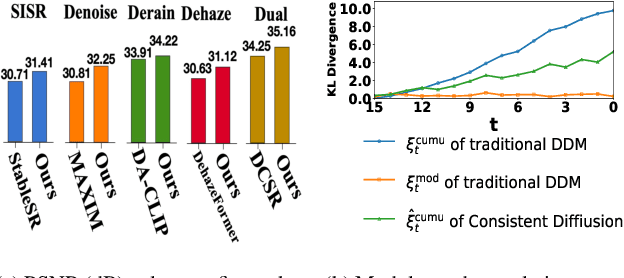
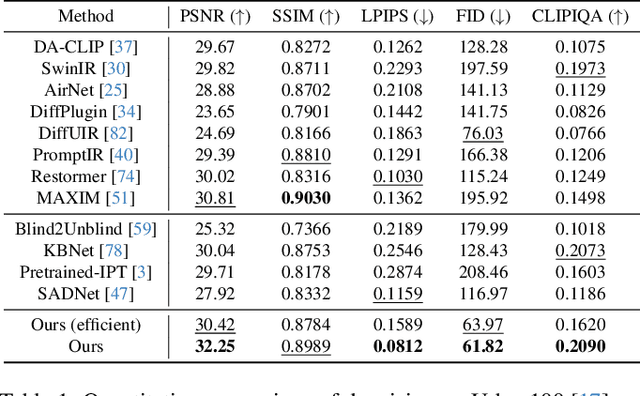


Abstract:In this work, we address the limitations of denoising diffusion models (DDMs) in image restoration tasks, particularly the shape and color distortions that can compromise image quality. While DDMs have demonstrated a promising performance in many applications such as text-to-image synthesis, their effectiveness in image restoration is often hindered by shape and color distortions. We observe that these issues arise from inconsistencies between the training and testing data used by DDMs. Based on our observation, we propose a novel training method, named data-consistent training, which allows the DDMs to access images with accumulated errors during training, thereby ensuring the model to learn to correct these errors. Experimental results show that, across five image restoration tasks, our method has significant improvements over state-of-the-art methods while effectively minimizing distortions and preserving image fidelity.
PVC: Progressive Visual Token Compression for Unified Image and Video Processing in Large Vision-Language Models
Dec 12, 2024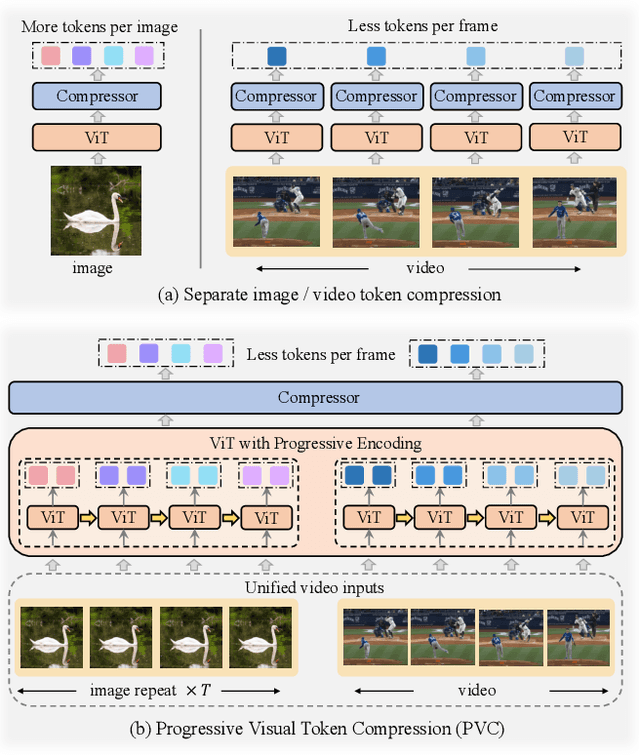
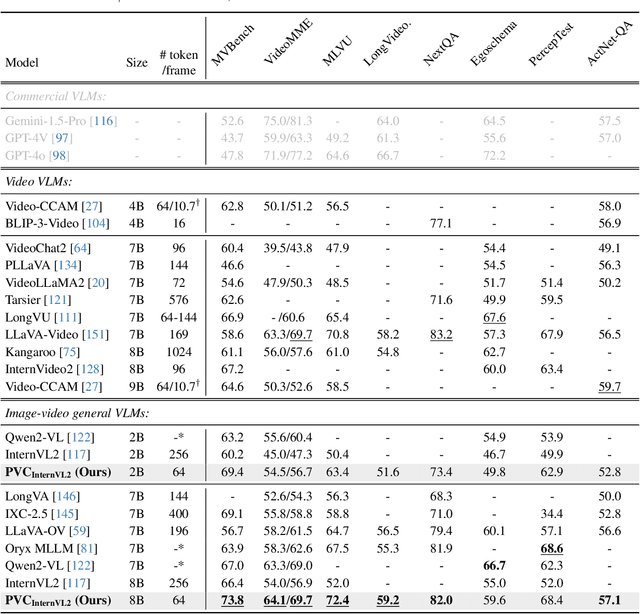
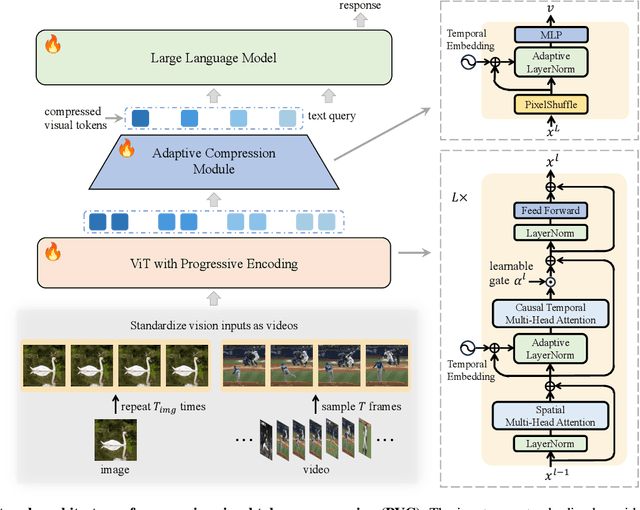
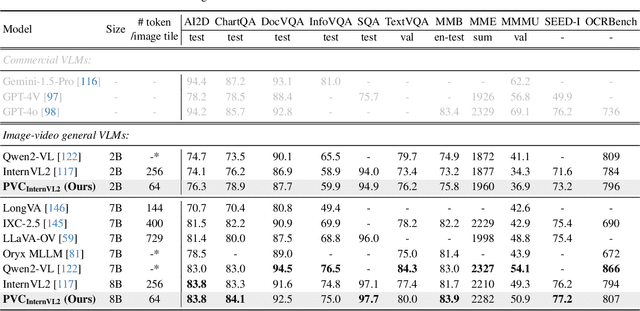
Abstract:Large Vision-Language Models (VLMs) have been extended to understand both images and videos. Visual token compression is leveraged to reduce the considerable token length of visual inputs. To meet the needs of different tasks, existing high-performance models usually process images and videos separately with different token compression strategies, limiting the capabilities of combining images and videos. To this end, we extend each image into a "static" video and introduce a unified token compression strategy called Progressive Visual Token Compression (PVC), where the tokens of each frame are progressively encoded and adaptively compressed to supplement the information not extracted from previous frames. Video tokens are efficiently compressed with exploiting the inherent temporal redundancy. Images are repeated as static videos, and the spatial details can be gradually supplemented in multiple frames. PVC unifies the token compressing of images and videos. With a limited number of tokens per frame (64 tokens by default), spatial details and temporal changes can still be preserved. Experiments show that our model achieves state-of-the-art performance across various video understanding benchmarks, including long video tasks and fine-grained short video tasks. Meanwhile, our unified token compression strategy incurs no performance loss on image benchmarks, particularly in detail-sensitive tasks.
Vision Model Pre-training on Interleaved Image-Text Data via Latent Compression Learning
Jun 11, 2024



Abstract:Recently, vision model pre-training has evolved from relying on manually annotated datasets to leveraging large-scale, web-crawled image-text data. Despite these advances, there is no pre-training method that effectively exploits the interleaved image-text data, which is very prevalent on the Internet. Inspired by the recent success of compression learning in natural language processing, we propose a novel vision model pre-training method called Latent Compression Learning (LCL) for interleaved image-text data. This method performs latent compression learning by maximizing the mutual information between the inputs and outputs of a causal attention model. The training objective can be decomposed into two basic tasks: 1) contrastive learning between visual representation and preceding context, and 2) generating subsequent text based on visual representation. Our experiments demonstrate that our method not only matches the performance of CLIP on paired pre-training datasets (e.g., LAION), but can also leverage interleaved pre-training data (e.g., MMC4) to learn robust visual representation from scratch, showcasing the potential of vision model pre-training with interleaved image-text data. Code is released at https://github.com/OpenGVLab/LCL.
ReWiTe: Realistic Wide-angle and Telephoto Dual Camera Fusion Dataset via Beam Splitter Camera Rig
Apr 16, 2024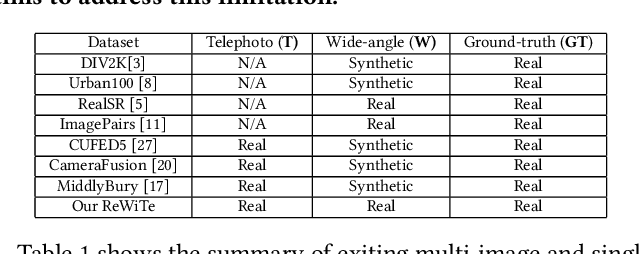
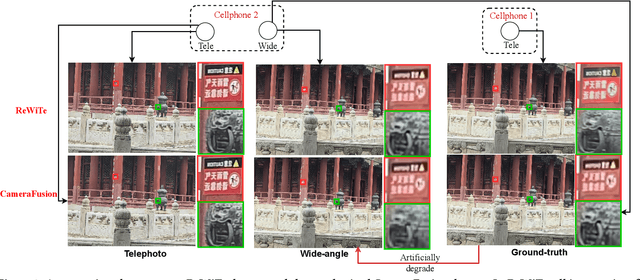

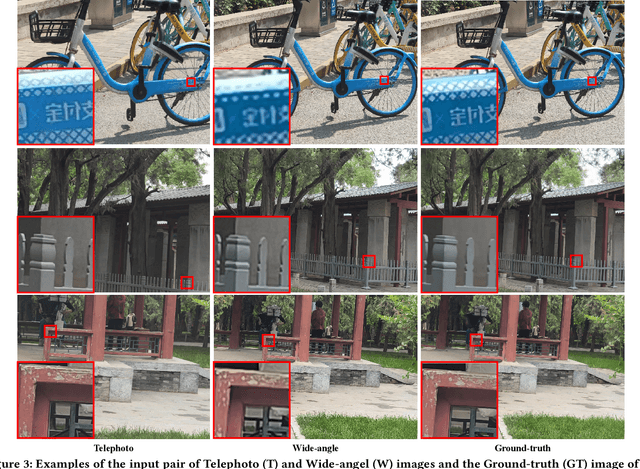
Abstract:The fusion of images from dual camera systems featuring a wide-angle and a telephoto camera has become a hotspot problem recently. By integrating simultaneously captured wide-angle and telephoto images from these systems, the resulting fused image achieves a wide field of view (FOV) coupled with high-definition quality. Existing approaches are mostly deep learning methods, and predominantly rely on supervised learning, where the training dataset plays a pivotal role. However, current datasets typically adopt a data synthesis approach generate input pairs of wide-angle and telephoto images alongside ground-truth images. Notably, the wide-angle inputs are synthesized rather than captured using real wide-angle cameras, and the ground-truth image is captured by wide-angle camera whose quality is substantially lower than that of input telephoto images captured by telephoto cameras. To address these limitations, we introduce a novel hardware setup utilizing a beam splitter to simultaneously capture three images, i.e. input pairs and ground-truth images, from two authentic cellphones equipped with wide-angle and telephoto dual cameras. Specifically, the wide-angle and telephoto images captured by cellphone 2 serve as the input pair, while the telephoto image captured by cellphone 1, which is calibrated to match the optical path of the wide-angle image from cellphone 2, serves as the ground-truth image, maintaining quality on par with the input telephoto image. Experiments validate the efficacy of our newly introduced dataset, named ReWiTe, significantly enhances the performance of various existing methods for real-world wide-angle and telephoto dual image fusion tasks.
View Transition based Dual Camera Image Fusion
Dec 18, 2023Abstract:The dual camera system of wide-angle ($\bf{W}$) and telephoto ($\bf{T}$) cameras has been widely adopted by popular phones. In the overlap region, fusing the $\bf{W}$ and $\bf{T}$ images can generate a higher quality image. Related works perform pixel-level motion alignment or high-dimensional feature alignment of the $\bf{T}$ image to the view of the $\bf{W}$ image and then perform image/feature fusion, but the enhancement in occlusion area is ill-posed and can hardly utilize data from $\bf{T}$ images. Our insight is to minimize the occlusion area and thus maximize the use of pixels from $\bf{T}$ images. Instead of insisting on placing the output in the $\bf{W}$ view, we propose a view transition method to transform both $\bf{W}$ and $\bf{T}$ images into a mixed view and then blend them into the output. The transformation ratio is kept small and not apparent to users, and the center area of the output, which has accumulated a sufficient amount of transformation, can directly use the contents from the T view to minimize occlusions. Experimental results show that, in comparison with the SOTA methods, occlusion area is largely reduced by our method and thus more pixels of the $\bf{T}$ image can be used for improving the quality of the output image.
A Pyramid Recurrent Network for Predicting Crowdsourced Speech-Quality Ratings of Real-World Signals
Jul 31, 2020



Abstract:The real-world capabilities of objective speech quality measures are limited since current measures (1) are developed from simulated data that does not adequately model real environments; or they (2) predict objective scores that are not always strongly correlated with subjective ratings. Additionally, a large dataset of real-world signals with listener quality ratings does not currently exist, which would help facilitate real-world assessment. In this paper, we collect and predict the perceptual quality of real-world speech signals that are evaluated by human listeners. We first collect a large quality rating dataset by conducting crowdsourced listening studies on two real-world corpora. We further develop a novel approach that predicts human quality ratings using a pyramid bidirectional long short term memory (pBLSTM) network with an attention mechanism. The results show that the proposed model achieves statistically lower estimation errors than prior assessment approaches, where the predicted scores strongly correlate with human judgments.
Ground-truth dataset and baseline evaluations for image base-detail separation algorithms
Feb 18, 2016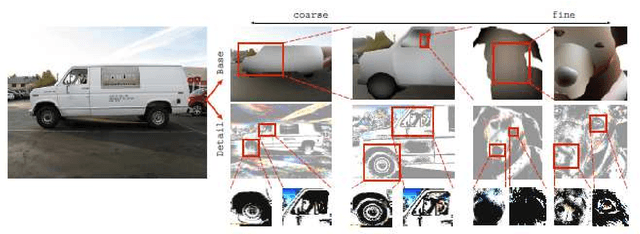


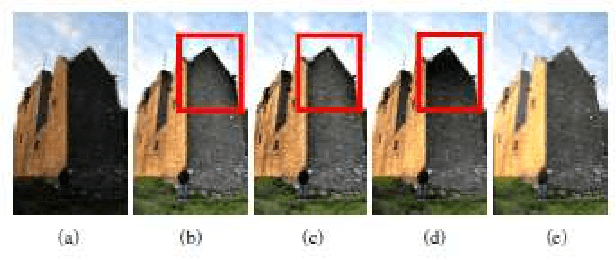
Abstract:Base-detail separation is a fundamental computer vision problem consisting of modeling a smooth base layer with the coarse structures, and a detail layer containing the texture-like structures. One of the challenges of estimating the base is to preserve sharp boundaries between objects or parts to avoid halo artifacts. Many methods have been proposed to address this problem, but there is no ground-truth dataset of real images for quantitative evaluation. We proposed a procedure to construct such a dataset, and provide two datasets: Pascal Base-Detail and Fashionista Base-Detail, containing 1000 and 250 images, respectively. Our assumption is that the base is piecewise smooth and we label the appearance of each piece by a polynomial model. The pieces are objects and parts of objects, obtained from human annotations. Finally, we proposed a way to evaluate methods with our base-detail ground-truth and we compared the performances of seven state-of-the-art algorithms.
 Add to Chrome
Add to Chrome Add to Firefox
Add to Firefox Add to Edge
Add to Edge